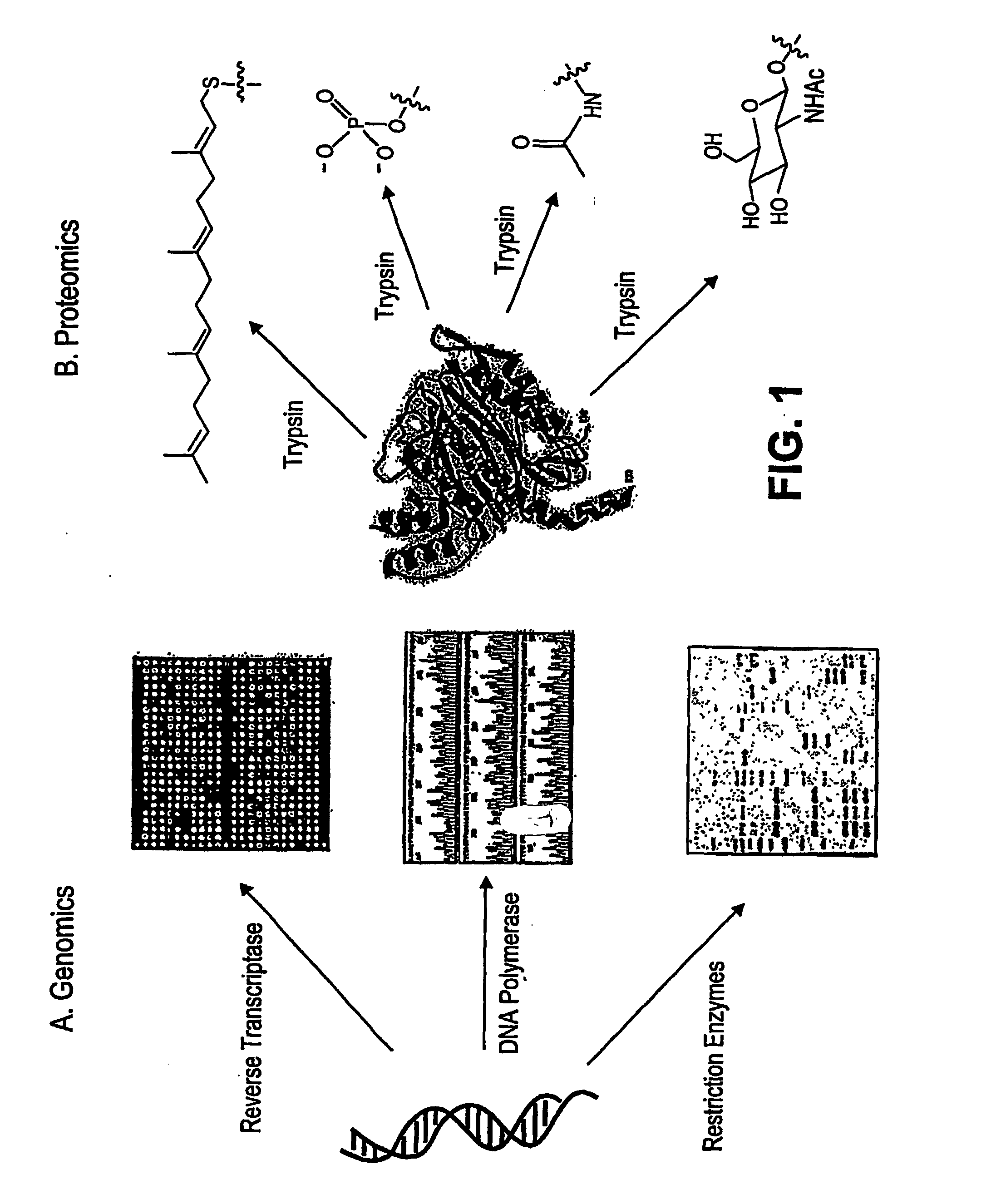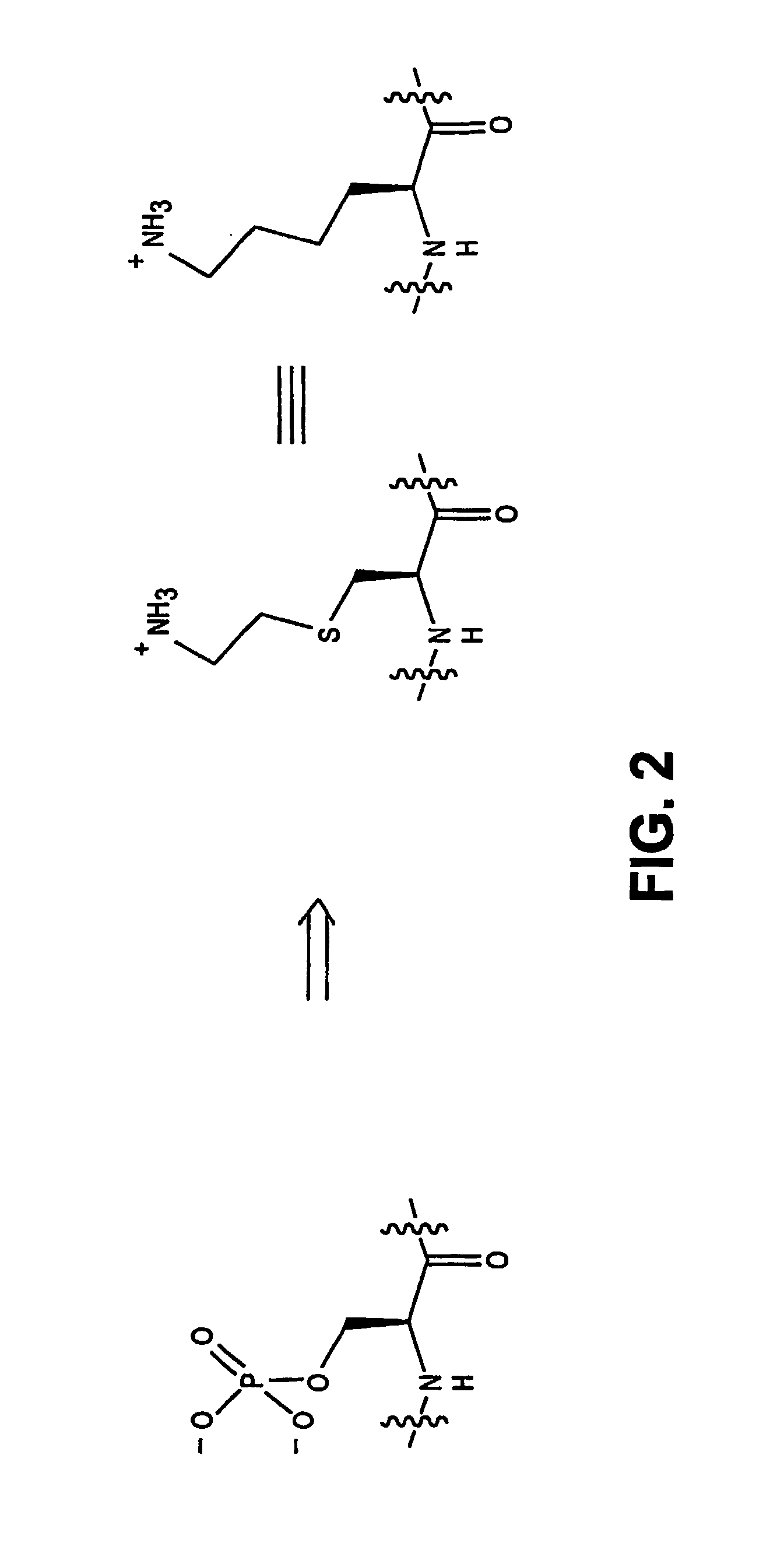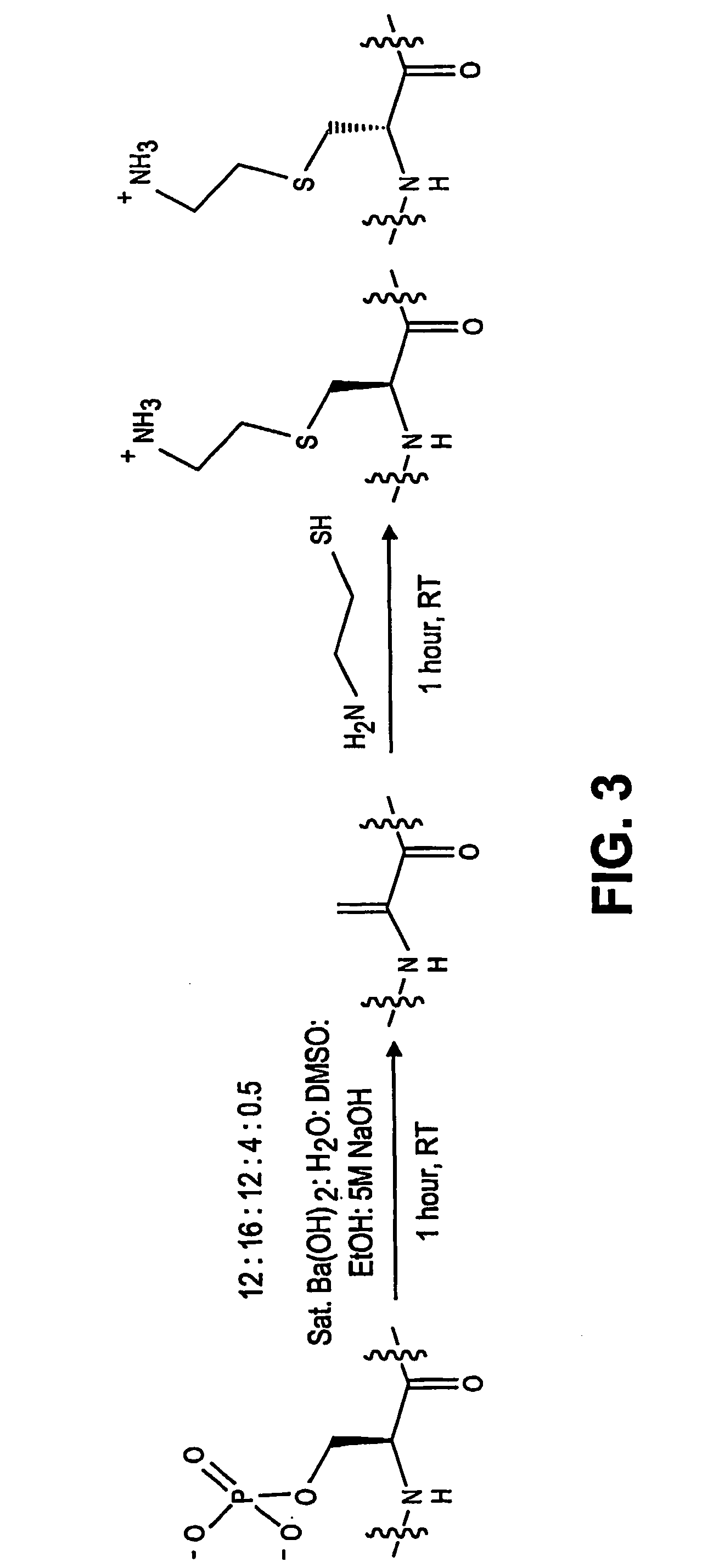Chemo-enzymatic process for proteome-wide mapping of post-translational modification
a technology of proteome and proteome, applied in the field of chemoenzymatic process for proteome-wide mapping of post-translational modification, can solve the problems of ms/ms of phosphopeptides remaining challenging, unable to localize phosphoamino acids within the sequence, and often failing to identify the precise site of phosphorylation
- Summary
- Abstract
- Description
- Claims
- Application Information
AI Technical Summary
Benefits of technology
Problems solved by technology
Method used
Image
Examples
example 1
1.1 Aminoethylcysteine Modification and Protease Digestion of Peptides and Proteins
[0155] For model peptides, approximately 100 μg peptide was dissolved in 50 μL of a 4:3:1 solution of H2O:DMSO:EtOH. 23 μl of a sat. Ba(OH)2 solution and 1 μL of 5M NaOH were added, and the reaction was incubated at room temperature. After 1 hour, 50 μL of a 1M solution of cysteamine in H2O was added directly to this reaction and the reaction was incubated an additional hour at room temperature. Reactions were analyzed by diluting into 1 mL H20 / 0.1% TFA and separating the reaction products by reverse phase HPLC (Rainin SD-200 system equipped with a Zorbax 300 C-18 9.4 mm×25 cm column). Individual fractions were analyzed by electrospray MS offline using a Waters Micromass ZQ.
[0156] For site-mapping, modified peptides were reconstituted in either 10 mM Tris, pH 8.5 (Trypsin) or 10 mM Tris, pH 8.5, 1 mM EDTA (Lys-C) and digested overnight at 37° C. Reactions were desalted (by C18 ZipTip or HPLC) and a...
example 2
[0168] To prepare the solid phase reagent, a polyethyleneglycol-polystyrene (PEG-PS) copolymer base resin (TentaGel AC) was loaded with cysteamine as the benzyl carbamate (FIG. 21A). This reagent was designed to incorporate two important features that facilitate aminoethylcysteine modification. First, a PEG-PS resin was selected, which swells in both organic and aqueous solvents, so that the resin capture can be performed in one pot under conditions optimized and validated for the solution phase chemistry. Secondly, the methoxybenzyl carbamate linkage is stable to the basic conditions of the β-elimination reaction, allowing for efficient peptide capture, but highly acid labile, facilitating aminoethylcysteine peptide release by brief treatment with trifluoroacetic acid (TFA). The use of this solid phase reagent facilitates automation (Zhou et al., Nat Biotechnol, 2002, 20(5): 512-5) and offer advantages over similar approaches that rely on selective biotinylation, which has been obs...
example 3
[0172] Although phosphorylation is the most common post-translational modification, phosphoproteins are often present at low abundance and phosphorylated sub-stoichiometrically, making genome wide phosphorylation analysis an analytical challenge. A method for phosphopeptide purification as well as phosphorylation site mapping would greatly facilitate this process. For this purpose, an exemplary reaction of the invention was adapted to the solid phase, so that modification and enrichment of phosphopeptides or proteins can occur in one step (FIG. 21A).
3.1 Solid-Phase Capture and Modification of Phosphoserine Peptides
[0173] Following deprotection, the resin was washed with 5 times with H2O and 5 times with 4:3:1H2O:DMSO:EtOH. Peptides were dissolved in 250 μL of 4:3:1 H2O:DMSO:EtOH and added to 80 mg of resin swelled in the same. 225 μL of sat. Ba(OH)2 and 10 μL of 5M NaOH were added and the reaction was incubated for one hour at room temperature. After one hour, the resin was rinse...
PUM
| Property | Measurement | Unit |
|---|---|---|
| temperature | aaaaa | aaaaa |
| pH | aaaaa | aaaaa |
| pH | aaaaa | aaaaa |
Abstract
Description
Claims
Application Information
 Login to View More
Login to View More - R&D
- Intellectual Property
- Life Sciences
- Materials
- Tech Scout
- Unparalleled Data Quality
- Higher Quality Content
- 60% Fewer Hallucinations
Browse by: Latest US Patents, China's latest patents, Technical Efficacy Thesaurus, Application Domain, Technology Topic, Popular Technical Reports.
© 2025 PatSnap. All rights reserved.Legal|Privacy policy|Modern Slavery Act Transparency Statement|Sitemap|About US| Contact US: help@patsnap.com



